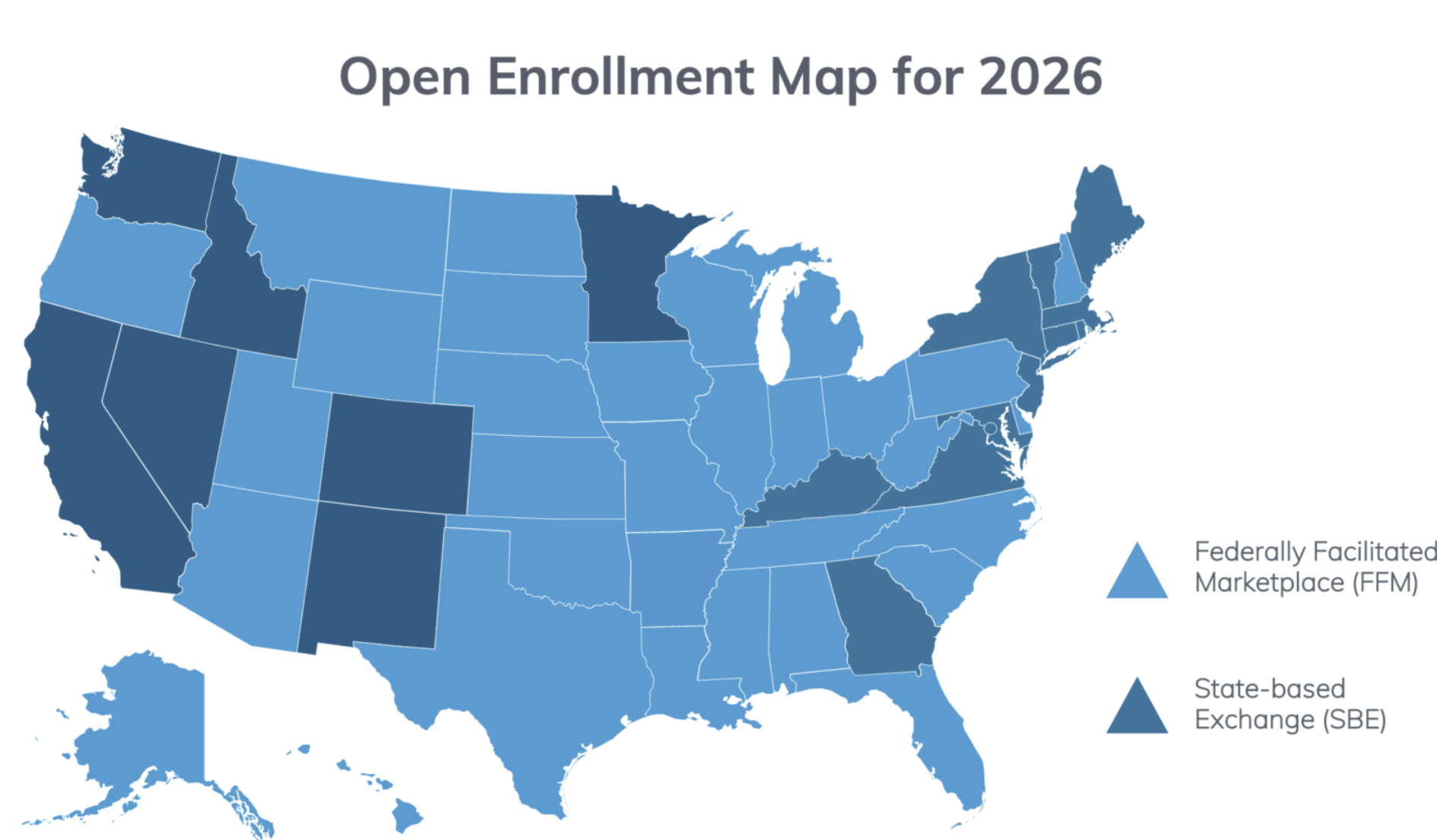The 2025 ACA Open Enrollment Period marked a significant milestone, with over 24 million consumers selecting affordable health coverage through the Marketplace.
This record-breaking participation highlights the increasing demand for accessible, consumer-friendly health insurance options. As carriers prepare for Open Enrollment Period (OEP) 2026, success will depend on more than just meeting deadlines—it requires strategic planning across operations, technology, and member engagement. 
Below are five essential actions health insurance carriers should take to ensure readiness for the upcoming enrollment season.
Ensure Operational Readiness
Operational readiness begins with aligning internal systems and teams around the annual regulatory filing cycle. Carriers must complete a series of filings, including Qualified Health Plan (QHP) applications, rate filings, network adequacy reports, and benefit templates. These filings are not only regulatory requirements but also foundational inputs for the online enrollment experience.
Once filings are approved by CMS or state departments, carriers must ingest the approved plan data into their core enrollment systems. This data must then be accurately mapped to plan selection logic and displayed on digital platforms including websites, mobile apps, and broker portals. Delays in regulatory approvals can cascade into delays in system configuration.
Thoroughly Test Systems and Processes
End-to-end testing is essential to ensure a seamless member experience and regulatory compliance. Carriers should simulate real-world enrollment scenarios across markets and coverage years to validate every aspect of the enrollment process.
Testing should cover plan pre-shopping simulations, digital form completion, binder payment workflows, and system-generated notices and invoices. It should also include validation of Electronic Data Interchange (EDI) transactions and compliance with state-specific requirements. Multilingual support and accessibility compliance must also be verified to ensure inclusivity.
A valuable tool in the mPulse system is the Rate Sheet Tester, which allows carriers to validate rate configurations across multiple dimensions such as age, region, and plan type. The tool supports custom scenario input and provides dynamic rate displays, with the option to export results into Excel for audit and analysis.
Double Check Compliance and Regulatory Changes
Staying current with regulatory changes is critical for compliance and operational integrity. The 2025 Marketplace Integrity and Affordability Final Rule introduced several updates that carriers must incorporate into their systems and workflows, including:
- Revised standards for income verification and eligibility redetermination
- Removal of DACA recipients from “lawfully present” status for ACA coverage
- New rules for automatic re-enrollment and premium thresholds
- Updates to actuarial value (AV) de minimis thresholds
- Requirements for pre-enrollment verification during Special Enrollment Periods (SEPs)
Carriers should review CMS guidance thoroughly and update eligibility logic, plan display rules, and member communications to reflect these changes. A full summary of the final rule is available on the CMS website.
Strengthen Education and Communication with Members
Effective communication with members is a cornerstone of a successful open enrollment period. Health insurance carriers must ensure that renewal and modification letters are accurate, timely, and compliant with regulatory requirements. These letters serve as the primary means of informing members about their coverage status for the upcoming plan year, including any changes to benefits, premiums, or plan availability.
There are several types of letters that carriers are required to send, depending on the member’s situation:
- Renewal letters: Notify members that they will be automatically re-enrolled in their current plan unless they take action.
- Discontinuation with replacement letters: Inform members that their current plan will no longer be offered, but they will be enrolled in a comparable alternative.
- Discontinuation without replacement letters: Used when no alternative plan is available.
- Catastrophic letters: Sent to members who are aging out of eligibility for catastrophic coverage, outlining their new plan options.
Timing is critical. Renewal notices must be postmarked no later than October 31, while discontinuation notices must be sent by October 1. These deadlines ensure that members have adequate time to review their options and make informed decisions before open enrollment begins.
To streamline this process, carriers should implement automated systems that generate and deliver these notices based on plan mappings and member eligibility. The system should support both paper and electronic delivery, with email alerts notifying members when notices are available in their online portal. It should also accommodate agent contact information, ensuring that members know who to reach out to for assistance.
Testing is a vital part of the communication process. Carriers must verify that all letter types render correctly, that benefit comparison tables are accurate, and that member-specific data is displayed properly. This includes validating plan mappings, rates, and benefit changes across current and future year catalogs. A structured testing cycle—beginning with user acceptance testing (UAT) and continuing through production verification—helps ensure that all communications are accurate and compliant.
By investing in robust communication workflows and automation, carriers can reduce errors, improve member satisfaction, and maintain compliance with CMS requirements. This proactive approach not only enhances the member experience but also strengthens the carrier’s reputation for reliability and service excellence.
Monitor Real-Time Metrics
Real-time monitoring is crucial during open enrollment, especially when system volumes spike. Monitoring ensures that carriers can respond quickly to issues, maintain compliance, and deliver a reliable member experience.
Carriers should track website performance metrics such as page load times, error rates, and uptime. Backend metrics like enrollment transaction volumes, queue latency, and integration errors must also be monitored. Operational metrics, including call center hold times and abandonment rates, provide insights into member behavior and support needs.
Compliance metrics such as 834 file submission success and 820 remittance confirmations are essential for meeting CMS requirements.
Bonus: Optimize Digital Self-Service Tools
Empowering members to self-serve during open enrollment can reduce support load and improve satisfaction. Enhanced Direct Enrollment (EDE) platforms and intuitive portals should support active renewals, eligibility checks, subsidy calculations, and real-time updates.
Carriers should ensure that their digital tools are user-friendly, mobile-optimized, and integrated with backend systems to provide a seamless experience. Investing in self-service capabilities not only improves efficiency but also aligns with consumer expectations for digital convenience.
How mPulse Can Help
Our platform is purpose-built to support ACA open enrollment with tools for batch auto-renewals, rate validation, letter automation, and real-time monitoring. Whether you’re updating the enrollment system based on current filings, testing workflows, or communicating with members, our system streamlines the process to reduce risk and improve outcomes.
We would be happy to provide a demo and show how our system can help you prepare for OE 2026 with confidence. Contact us today to schedule a walkthrough.






